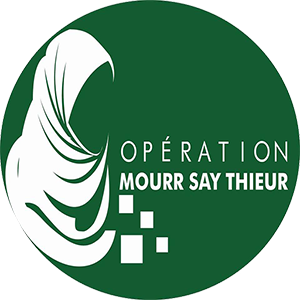Content
The production department uses the material and design specifications and adds additional labor to create the sign. The sign is transferred to the finishing department for final materials and labor, before the sign is installed or delivered to the customer. Job order costing is an accounting system that traces the individual costs directly to a final job or service, instead of to the production department. Recall the three components of product costs—direct materials, direct labor, and manufacturing overhead. As shown with Musicality’s products, not only are there different costs for each product when comparing traditional allocation with an activity-based costing, but ABC showed that the Solo product creates a loss for the company. Activity-based costing is a more accurate method, because it assigns overhead based on the activities that drive the overhead costs.
Process costing handles the same types of manufacturing costs as job order costing. Both systems deal with tracking how manufacturing costs such as direct materials, direct labor, and overhead flow through work-in-process to finished goods and finally, when the goods are sold, to cost of goods sold. The choice of costing system depends on the type and nature of the production and the information needs of the managers and customers. Generally, job order costing is more suitable for products or services that are unique, customized, or made to order. Process costing is more suitable for products or services that are homogeneous, mass-produced, or standardized.
Job Costing vs. Process Costing Side-by-Side Comparison
Job order costing tracks prime costs to assign direct material and direct labor to individual products (jobs). Process costing also tracks prime costs to assign direct material and direct labor to each production department (batch). In a process cost system, costs are maintained by each department, and the method for determining the cost per individual unit is different than in a job order costing system. Rock City Percussion uses a process cost system because the drumsticks are produced in batches, and it is not economically feasible to trace the direct labor or direct material, like hickory, to a specific drumstick. Therefore, the costs are maintained by each department, rather than by job, as they are in job order costing.
For example, assume a not-for-profit pet adoption organization has an annual budget of \(\$180,000\) and typically matches 900 shelter animals with new owners each year. Understanding the full manufacturing process for a product helps with tracking costs. This video on how drumsticks are made shows the production process for drumsticks at one company, starting with the raw wood and ending with packaging. Identify whether each business listed in the following would use
job costing or process costing. Indirect cost is a fraction of the direct cost, which calculates the overall cost of the product.
Advantages and Disadvantages of Creating an Activity-Based Costing System for Allocating Overhead
It also allows for more flexibility and customization in pricing and bidding. However, job order costing also has the disadvantage of being more costly, time-consuming, and error-prone due to the complexity and frequency of the calculations and adjustments. It also requires more documentation and tracking of the costs for each job. Process costing has the advantage of being more simple, efficient, and consistent in costing due to the standardization and continuity of the production. However, process costing also has the disadvantage of providing less detailed and accurate information for decision making, planning, control, and evaluation of each stage or department.
The cost to change machine settings and to move in different materials – such as a different type of fabric – is factored into the overhead cost for each product. Pet Smart, H&R Block, Chili’s, and Marshalls are popular chains often found at the same shopping center, even though they are very different businesses. Although they have a retail store, the Pet Smart Corporation also manufactures large volumes of its own products, whereas H&R Block prepares taxes for individual customers. Chili’s prepares food, and its wait staff provides a service, whereas Marshalls sells a variety of products at retail. Rock City Percussion makes \(8,000\) hickory sticks per day, four days each week. It is difficult to tell the first drumstick made on Monday from the \(32,000\)th one made on Thursday, so a computer matches the sticks in pairs based on the tone produced.
Job Order Costing vs. Process Costing: Overview & Examples
The logic is that a business incurs costs based on activities like the number of labor hours worked, the total units produced, or the total miles driven. If Jennifer’s company doesn’t produce or sell anything during a particular month, many of our costs would not be incurred. Process costing and job order costing are both acceptable methods for tracking costs and production levels. Some companies use a single method, while some companies use both, which creates a hybrid costing system.
Process costing is used when the products or services you offer are nearly identical or close to it. Job costing contains lots of discrete information about each job and costs accountants based on their experience assigned to each job. Where the cost allocation base refers to the estimated machine hours or estimated labor hours, depending on which one the company chooses to estimate its overhead costs by. The diagram also shows the departments that report to the production unit director and gives an indication as to the flow of goods through production.
Overhead is applied to each product based on an activity base, which will be explained later in this chapter. Figure 4.1 shows how product costs flow through accounts for job
costing and process costing systems. Table 4.1 outlines compare and contrast job-order and process costing systems the
similarities and differences between these two costing systems. Review these illustrations carefully before moving on to the next
section. The following article provides an outline for Job Costing vs. Process Costing.
A homogeneous product or service is one that cannot be distinguished from other products and services offered. In other words, the product is mass produced, or the service provided is the same service and level of service for all customers. Recall the three components of product costs—direct materials,
direct labor, and manufacturing https://accounting-services.net/bookkeeping-atlanta/ overhead. Assigning these product
costs to individual products remains an important goal for process
costing, just as with job costing. However, instead of assigning
product costs to individual jobs (shown on a job cost sheet),
process costing assigns these costs to departments (shown on a
departmental production cost report).








No responses yet